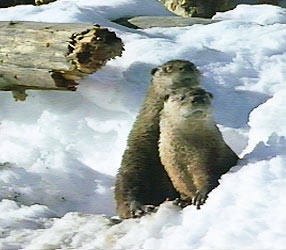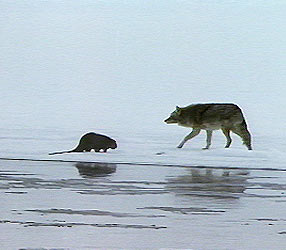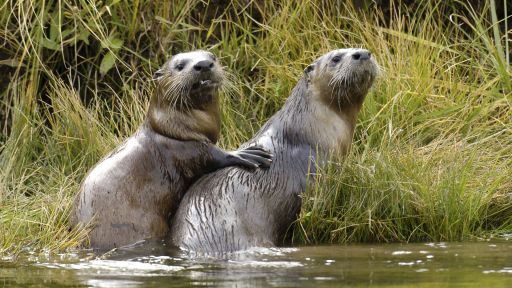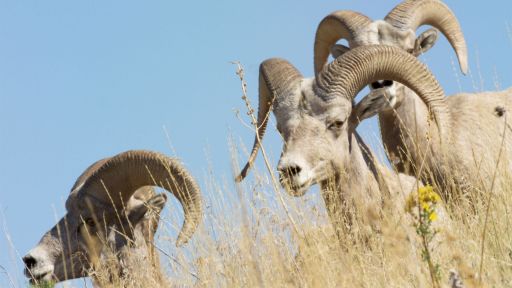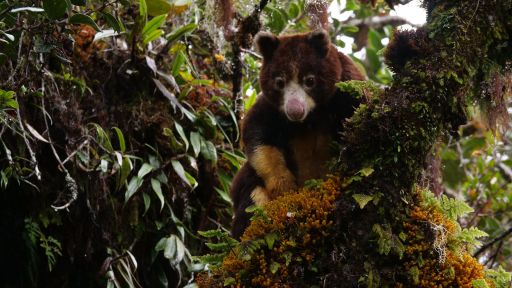The American river otter once inhabited waterways throughout the United States. Over time, a combination of the fur trade and habitat destruction have caused the otter’s numbers to decline. In some areas, the species is endangered. In contrast, the river otters in the NATURE program Yellowstone Otters are protected within the park’s boundaries. Bothered by few predators, they thrive amidst an abundance of food.
A group of sea otters bobbing on their backs, wrapped in the strands of kelp that keep them afloat, was once a common sight off the California coast. Hunted almost to extinction, sea otters are now protected by the Endangered Species Act. Unlike river otters, who are comfortable on land, sea otters can barely walk and almost never leave the water. They spend most of their lives in the sea, even sleeping there.
There are six species of otters in the world, including river otters and their more famous relatives, sea otters. All sport a thick coat of dark, oily fur, lined with a lofty undercoat of shorter hair. The double layers trap air between them, creating an insulating barrier against winter temperatures. This protection requires vigilant maintenance: if the fur becomes flat, no air can circulate, and the animal may freeze. Otters must constantly groom their coats to prevent them from becoming matted.
To stay alive, sea otters must eat 25 percent of their own body weight every day. A 40-pound otter must find 10 pounds of food — a full-day task. To eat more efficiently, sea otters developed the ability, unique among the species, to use tools. Each day, a sea otter will start out by locating a sharp rock, which it balances on its belly. For the rest of the day, the otter will use the rock to crack open the oysters and other shellfish it eats to fill its daily quota.
River otters may be more comfortable on dry land than their relations, but they catch their prey in the water. Natural swimmers, all otters have evolved small valve-like skin flaps that cover their ears and nostrils, allowing them to dive to depths of up to 35 feet. With this natural protection, otters can stay underwater for up to five minutes.
As you see in Yellowstone Otters, year after year otter mothers bear a litter of pups, rear them for a year and a half, and then leave them to bear and raise a new family. While they are together, a strong social bond keeps otter families close and helps them ward off predators. A gang of sharp-clawed, belligerent otters can successfully force a coyote to back down from the otters’ recently caught fish.
Otters are mustelids, relatives of weasels, which are some of the most prodigious breeders in the wild. Almost as soon as her litter is born, a female otter is ready to mate again. Otter pups are born in the dead of winter, so a pregnant female seeks out the shelter of abandoned beaver dens in order to give birth to her young. After two months spent nursing the newborns underground, the otter family emerges. Within a year, the pups will be full grown, ready to strike out on their own.

